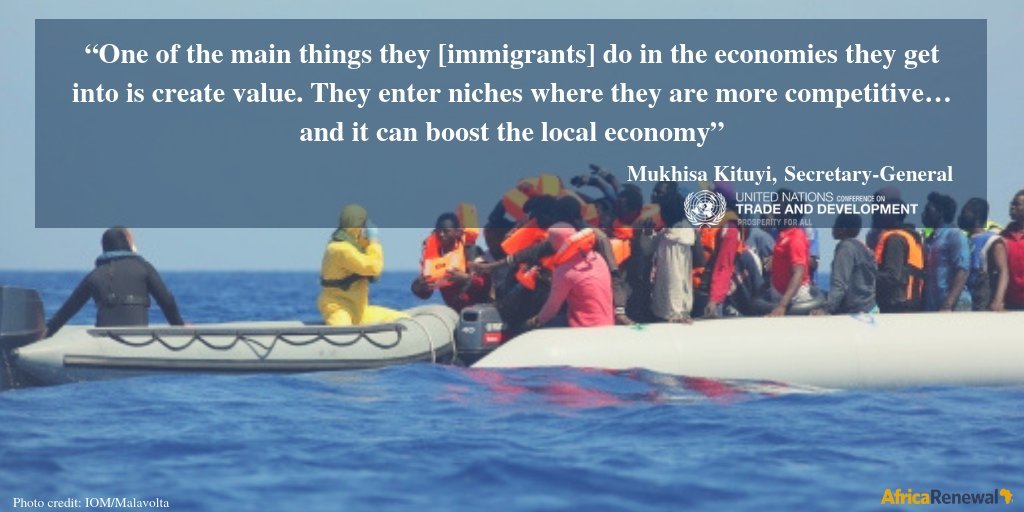Editing Office - Geneva
A global migration compact may help combat the myth that migrants are liabilities

Rescue operations of African migrants carried out in the Channel of Sicily, Italy. Photo: IOM / Malavolta
In August 2018, French President Emmanuel Macron, German Chancellor Angela Merkel and British Prime Minister Theresa May visited countries in Africa, sparking hope of increased foreign direct investments (FDI) in the continent. Mr. Macron was in Nigeria, Ms. Merkel visited Ghana, Nigeria and Senegal, and Ms. May made stops in Kenya, Nigeria and South Africa. Apart from the question of FDI, these influential leaders were looking at how to stem the flow of African migrants traveling to Europe in search of jobs and better lives. “I believe in a win-win game. Let’s help Africa to succeed. Let’s provide new hope for African youth in Africa,” President Macron said in Nigeria, explaining that it was in Europe’s interest to tackle migration from Africa at its roots. New York Times writers Eduardo Porter and Karl Russell echoed the French president’s sentiments: “If rich countries want fewer immigrants, their best shot might be to help poor countries become rich, so that fewer people feel the urge to leave.” Africans on the road Every day hundreds of Africans, including women and children, strike out in search of real or imagined riches in Europe or America. About a million migrants from sub-Saharan Africa moved to Europe between 2010 and 2017, according to the Pew Research Center, a Washington, D.C.–based nonpartisan fact tank. While Ghana, Kenya, Nigeria, Senegal, Somalia and South Africa are the top way stations for sub-Saharan migrants moving to Europe and the US, Pew lists South Sudan, Central African Republic, São Tomé and Príncipe, Eritrea and Namibia as having some of the fastest-growing international migrant populations living outside their country of birth. Africans are on the move because of “conflict, persecution, environmental degradation and change, and a profound lack of human security and opportunity,” states the International Organisation for Migration (IOM), in its World Migration Report 2018. Migration corridors mostly used by Africans are Algeria to France, Burkina Faso to Côte d’Ivoire, Egypt to the United Arab Emirates, Morocco to Spain, and Somalia to Kenya. Of the 258 million international migrants globally, 36 million live in Africa, with 19 million living in another African country and 17 million in Europe, North America and other regions, Ashraf El Nour, Director of IOM, New York, informed Africa Renewal. When unregulated and unmanaged, migration can create “false and negative perceptions of migrants that feed into a narrative of xenophobia, intolerance and racism,” UN Secretary-General António Guterres noted at an event in New York last September. “The narrative of migrants as a threat, as a source of fear, which has colored international media coverage on migration, is false,” said Mukhisa Kituyi, Secretary-General of the UN Conference on Trade and Development (UNCTAD), a UN body that deals with trade, investment and development issues, in an interview with Africa Renewal.
For more information: https://www.un.org/africarenewal/magazine/december-2018-march-2019/towards-safe-and-orderly-migration